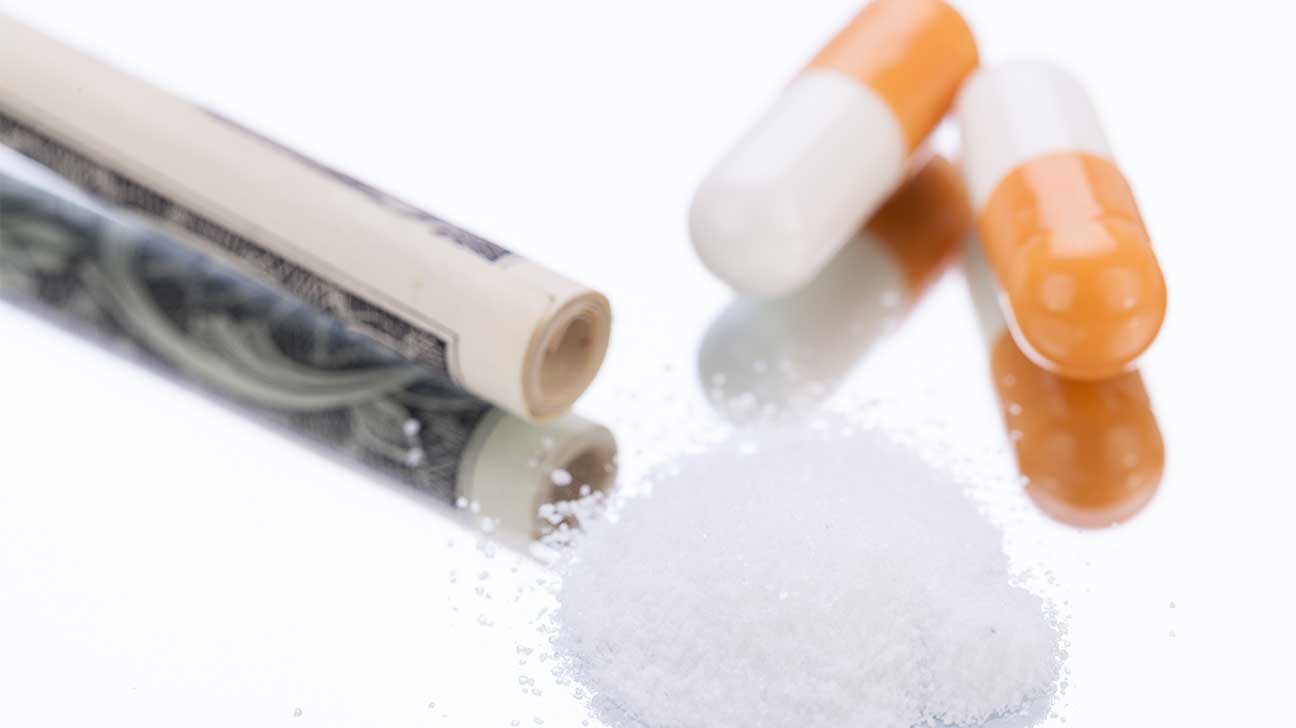
Mixing two illegal drugs, like Xanax and meth, comes with a range of side effects and risks. Also known as polydrug abuse, this type of substance abuse increases a person’s risk for addiction, may lead to overdose, and can result in other health consequences.
Methamphetamine use has become a big problem across all parts of the United States. Meth is a psychostimulant that gives the person using the drug a euphoric high and intense energy. It speeds up vital functions in the central nervous system (CNS) like blood pressure and heart rate.
Because of the positive feelings strong high that result from meth use, it is very physically and chemically addictive. Some people who abuse meth also take benzodiazepines (benzos) like prescription Xanax to “even out” some of the meth’s negative effects.
However, combining meth and Xanax can have dangerous side effects. Fortunately, addiction treatment for polysubstance abuse is available and works to address these side effects and teach strategies to prevent relapse.
Side Effects Of Mixing Xanax And Methamphetamine
A prescription pill, Xanax (alprazolam) is a potent central nervous system depressant that typically treats insomnia and anxiety. It depresses vital functions like breathing, blood pressure, and heart rate, which can result in dangerous drug overdoses leading to heart attacks, heart failure, and respiratory failure.
Mixing Xanax with meth, which has the opposite effect on the brain and body, can have unpredictable side effects.
Taking Xanax To Stem Meth Effects
After the meth high wears off, the person may experience a range of emotions and behaviors—from paranoia to insomnia and apathy. Because of this, they may use CNS depressants to ease the “comedown” off meth. Alcohol may also be used to help with meth withdrawal symptoms.
After a sustained meth binge, a person can become unstable. They can exhibit psychotic behavior and suffer from hallucinations.
Downers like Xanax gives the person “tweaking” on meth unpredictable relief—ranging from hyperactive behavior to excessive sedation.
Self-medication to offset “tweaking” symptoms can include benzos like Valium and Xanax, or opioids like fentanyl.
Because the benzodiazepines like Xanax and meth, a stimulant, have opposing side effects, taking one to cure the negative effects of the other is never a good idea.
Addiction To One Or Both Drugs
In addition to the side effects a person may experience from mixing Xanax and meth, they may also be at heightened risk for developing an addiction to one or both of these drugs.
Meth addiction results from dopamine release but causes recognizable side effects like:
- skin sores
- confusion
- paranoia
- irritability
People who become addicted to meth commonly inject, smoke, or snort the street drug. They may even turn to meth due to an addiction to prescription amphetamines, which are available in pill form to treat attention disorders. Addiction and dependence can occur whenever meth is abused.
Similarly, Xanax can be addictive when used by itself. However, it compounds the addiction to methamphetamines by relieving negative symptoms and altering the high associated with meth.
Risks And Dangers Of Mixing Benzodiazepines And Meth
Methamphetamines are psychostimulants that make the brain release dopamine, serotonin, and norepinephrine. The intensely positive feelings a person gets when using meth makes it very difficult to stop use.
“Street” meth has poor quality control compared to pill-form “uppers”. It is difficult to predict the appropriate meth dosage to mix with benzos like Xanax. Because of this, there is no safe amount of meth to mix with Xanax, since people have no way to know the purity of the meth they use.
When the goal is to stop negative feelings and get high, people with addiction can make mistakes that can turn to polydrug use.
However, drug abuse involving either drug comes with risks. Combining the two can worsen these risks. For example, taking too much Xanax can cause your heart or lungs to stop. Too much meth can cause a stroke or heart attack.
Withdrawal Symptoms
Withdrawal symptoms for both meth and Xanax can be intense and unpleasant. Many people report cravings for both drugs up to a year after detox. It is suggested that detox from meth be supervised, especially if polydrug abuse includes benzos.
When Xanax dependency develops, withdrawal symptoms occur. More serious immediate reactions may require medical intervention.
Xanax withdrawal symptoms may include:
- heart palpitations
- erratic behavior
- hallucinations
- irritability
- seizures
- sweats
Meth withdrawals create numerous emotional and physical responses that can be more safely experienced in a controlled rehab setting.
Some drug withdrawal symptoms include:
- seizures
- heart arrhythmias and hypertension
- dry mouth
- muscle spasms
- headaches
- prolonged insomnia
- fatigue, sleepiness, and loss of motivation
- anxiety or depression
- low energy and drowsiness
- intense meth cravings
- paranoia
Fatal Overdose
People who abuse meth and Xanax may develop tolerance to both drugs. Periods of high use or low use can make it difficult to calculate a safe dose that creates the “best” high feeling.
Overdoses happen when the body cannot process the drugs. Tolerance changes, drug purity changes, and the body often loses the ability to process these drugs because of organ damage.
Xanax overdose causes the central nervous system to suppress vital systems.
Serious overdose symptoms include:
- shortness of breath or inability to breathe (also known as respiratory depression)
- coma
- tremors
- weakness
- loss of coordination
- blurred vision and extreme dizziness
Methamphetamine and Xanax overdose create a dangerous mix of highs and lows that can be difficult to manage.
Symptoms and results of overdose include:
- light-headedness
- slowed or impaired breathing
- drowsiness and sleepiness
- stroke
- heart attack
- unconsciousness/unresponsiveness
- excessive drowsiness/sleepiness
- cardiac arrest (heart attack)
Treating Meth And Xanax Addiction
Many people that use uppers and downers together don’t recognize the dangers until it’s too late. Any drug use involving meth is highly dangerous and addictive. It is possible to live a good life without meth addiction. But it has to be a choice.
The detox process from severe drug abuse can be dangerous without proper support and supervision. Inpatient treatment programs can provide the appropriate healthcare support to supervise a tapered detox.
Both inpatient and outpatient treatment facilities can offer behavioral therapy that helps people in recovery from meth addiction the emotional tools to live a sober life.
If you or a loved one is using meth and Xanax, please seek help. Our treatment specialists can help you find the best treatment options for substance abuse. Call today for help.
Addiction Resource aims to provide only the most current, accurate information in regards to addiction and addiction treatment, which means we only reference the most credible sources available.
These include peer-reviewed journals, government entities and academic institutions, and leaders in addiction healthcare and advocacy. Learn more about how we safeguard our content by viewing our editorial policy.
- Medscape–Methamphetamine Toxicity
https://emedicine.medscape.com/article/820918-overview - Medscape–Benzodiazepine Toxicity
https://emedicine.medscape.com/article/813255-overview


